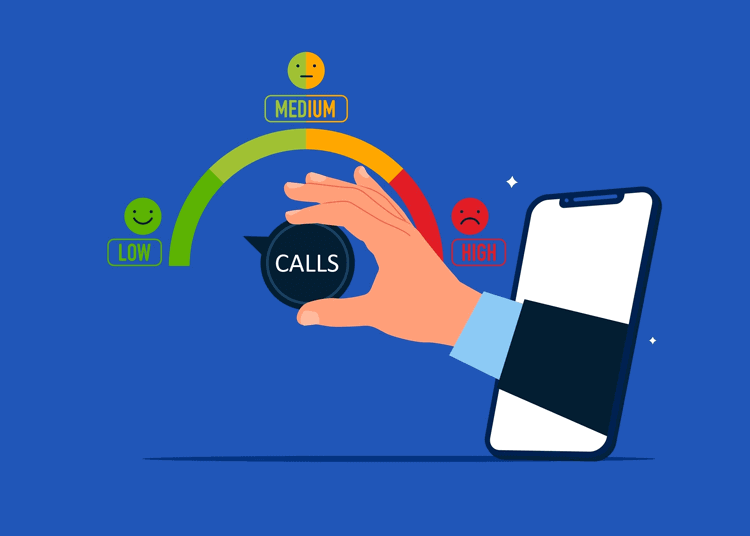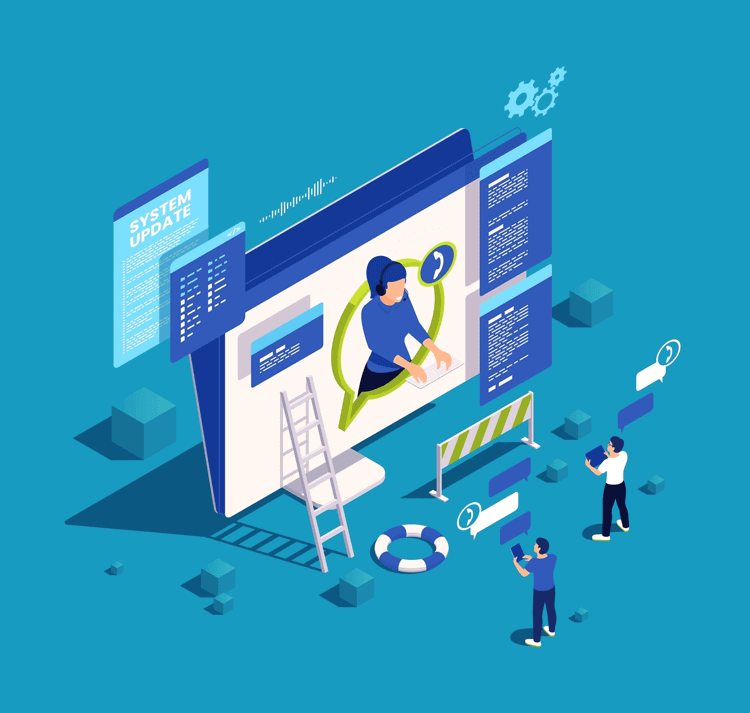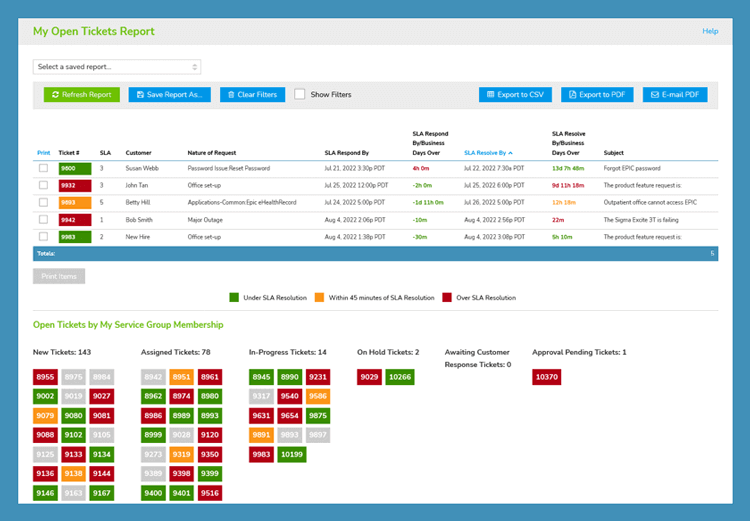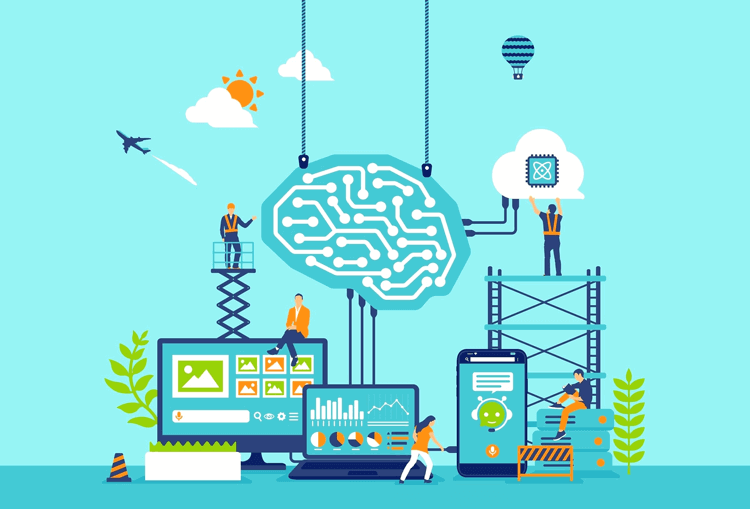15 Innovative Call Reduction Strategies and How To’s for Today’s Customer Support
Effective call reduction strategies help maintain a streamlined and efficient call center or help desk operation. By implementing a variety of techniques, companies can not only decrease call volumes but also enhance customer satisfaction and operational efficiency.
This article explores innovative strategies that can help reduce inbound calls, optimize resources, and deliver superior customer experiences.

What is Call Reduction?
Call reduction is a set of strategies and practices aimed at decreasing the number of inbound calls to a call center or help desk. The primary goal of call reduction is to manage and minimize unnecessary customer calls by providing alternative issue-resolution solutions.
Effective call reduction strategies involve a comprehensive understanding of customer needs and behaviors. They also require continuous monitoring and improvement of support processes.
Call Reduction Benefits
Reducing the volume of inbound calls can bring the following benefits:
- Lower operational costs
- Increased process and human resource efficiency
- Higher customer satisfaction due to greater convenience and quicker resolution times
Watch Our Video on Call Reduction and Implementation Strategies
15 Innovative Call Reduction Strategies for Your Organization
The following are some modern ways call centers and help desks can reduce call volume:
-
Implement Predictive Analytics
Use predictive analytics to anticipate customer needs and resolve issues before they require a call. This can include analyzing patterns in customer behavior and proactively addressing potential problems.
-
Optimize Mobile App Functionality
Enhance the functionality of your mobile app to include support features such as live chat, FAQs, and troubleshooting guides that customers can access on the go.
-
Create a Comprehensive Knowledge Base
Develop an extensive online knowledge base that includes detailed articles and step-by-step guides to help customers find solutions independently.
-
Offer Virtual Hold
Allow customers to retain their place in the queue and receive a callback when an agent is available, rather than waiting on hold. This can improve the customer experience and manage call volume more effectively.
-
Enhance IVR (Interactive Voice Response) Systems
Improve your IVR system to provide more accurate and useful options, enabling customers to resolve their issues without needing to speak to an agent.
-
Enhanced Troubleshooting Tools
Provide agents with advanced troubleshooting tools and diagnostic software to quickly identify and solve customer problems without needing to escalate calls.
-
Employee Empowerment Programs
Empower employees with the decision-making authority to resolve issues on the spot. This also can reduce the need for multiple calls and escalations.
-
Create Interactive Tutorials
Develop interactive tutorials and guided walkthroughs that help customers troubleshoot and resolve issues step-by-step on their own.
-
Offer Video Support
Provide video support options where customers can see agents visually demonstrate how to resolve their issues during live ticket interactions. This can be more effective than text or verbal-based instructions such as in a chat or even on a phone call.
-
Implement Smart FAQs
Use AI to create smart FAQs that dynamically adjust and provide the most relevant answers based on customer queries. This can help improve self-service success rates.
-
Regularly Update Support Content
Ensure that all support content, including FAQs, knowledge bases, and tutorials, is regularly updated to reflect the latest information and solutions.
-
Personalize Customer Interactions
Use Customer Relationship Management (CRM) systems to personalize interactions based on customer history and preferences, which can help address issues more efficiently and reduce repeat calls.
-
Customer Journey Mapping
Analyze and map out the entire customer journey to identify pain points where customers are likely to need support, then address those proactively to prevent calls.
-
Use Customer Feedback to Improve Products/Services
Regularly gather and analyze customer feedback to identify recurring issues and make improvements to products or services.
-
Develop a Community Forum
Create an online community forum where customers can ask questions and share solutions with each other. This peer-to-peer support can reduce the number of calls to your center.
How to Build a Call Reduction Plan
Creating a successful call reduction plan involves a systematic approach that includes assessment and continuous improvement.
-
Assess Current Operations
Analyze Call Data: Start by collecting and analyzing data on current call volumes, types of inquiries, call durations, and peak times. Identify patterns and common reasons for calls.
Customer Feedback: Gather feedback from customers to understand their pain points and areas where they face difficulties that lead them to call customer support.
Agent Input: Consult with call center agents to gain insights into frequent issues they encounter and suggestions for reducing call volumes.
-
Create an Implementation Plan
Set Clear Objectives: Define specific, measurable goals for call reduction, such as a percentage decrease in call volume or improvement in first-call resolution rates.
Prioritize Strategies: Rank the strategies based on their potential impact and feasibility, and create a timeline for implementation.
Assign Responsibilities: Designate team members to oversee the implementation of each strategy, ensuring accountability and clear communication.
-
Continuous Improvement
Review and Adjust: Periodically review the performance of implemented strategies and adjust them based on data and feedback.
Stay Updated: Keep up with industry trends and emerging technologies that can further enhance your call reduction efforts.
Engage in Ongoing Training: Continuously train agents on new tools, processes, and best practices to maintain high performance and adaptability.
Conclusion: Call Reduction Planning is Worth the Time
Implementing effective call reduction strategies can help enhance the efficiency and performance of call centers and help desks. By analyzing current operations, developing a comprehensive plan, and leveraging technology, organizations can significantly decrease call volumes while improving customer satisfaction. Continuous monitoring and updating these strategies can help maintain responsiveness to changing customer needs and industry trends.
A well-executed call reduction plan not only streamlines operations but also creates a better customer experience, bringing the organization and the company as a whole long-term success.
Giva Can Help Further Streamline Your Support Operations
Giva's customer service software call center and help desk solution is easy to set up and use, with robust reporting.
Giva's features include:
- AI Copilot Capability: Harness the power of Giva's AI Copilot to effortlessly refine responses and quickly access and format solution information. This empowers agents to address customer issues with accuracy and efficiency.
- Knowledge Base: Stop reinventing the wheel with a searchable knowledge base. Leverage valuable customer service resolutions previously created to resolve similar tickets.
- Customer Self-Service Portal: Provide customers round-the-clock access to customer service resources, so they can resolve their own issues before contacting your agents.
- Automate and Schedule Tasks and Ticket Workflows: Automatically open tickets on a scheduled and recurring basis. Automate escalation and closure of tickets.
Let Giva help bring call reduction to your support teams. Book a free Giva demo to see our solutions in action, or start your own free, 30-day trial today!





